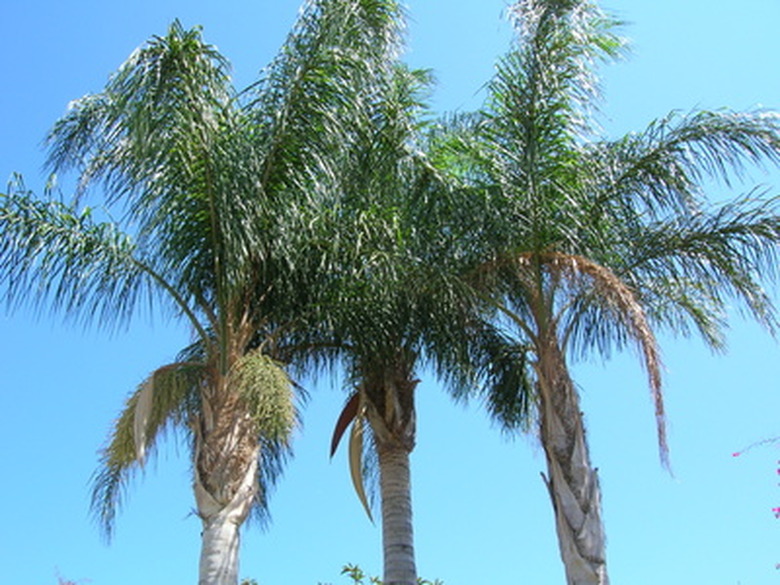How To Tell If A Queen Palm Is Dead
Queen palms are a very popular palm in the extreme southern parts of the United States. They are primarily grown where wintertime temperatures stay above 25 degrees F. Like any other plant, queen palms can fall prey to a multitude of conditions which can ultimately result in the death of the queen palm. Palms can be successful at masking their ill health until it's too late, which can make it challenging to tell if a queen palm is dead. By looking for a few key characteristics, however, you should be able to fairly easily identify a dead queen palm.
Step 1
Look for new growth to appear from the central bud. New growth is called a "spear" until it opens and is then called a "frond". If you aren't noticing any new growth, tug on the spear to see if it pulls out. If the bud is rotted, the spear will pull out easily. Palms frequently can retain older green growth even though the central bud is dead.
- Queen palms are a very popular palm in the extreme southern parts of the United States.
- Palms can be successful at masking their ill health until it's too late, which can make it challenging to tell if a queen palm is dead.
Step 2
Look for a conk near the base of your queen palm trunk. The disease Ganoderma butt rot is a fungus that invades trunks of queen palms and causes these conks to form. A conk is a spongy, white, mushroom-like growth and forms a horizontal disc outward from the trunk of the palm tree. Once you notice the conk, the tree is unable to be saved and must be removed.
Step 3
Look for areas of trunk collapse. If live tissue in the trunk becomes necrotic, you will notice soft or spongy areas in the trunk and the trunk may start collapsing inward. This is another irreversible condition and the tree is effectively dead.
- Look for a conk near the base of your queen palm trunk.
- If live tissue in the trunk becomes necrotic, you will notice soft or spongy areas in the trunk and the trunk may start collapsing inward.
Step 4
Watch for fronds that severely yellow over a short period of time. Severe yellowing can be due to root rot which is commonly caused by over watering. If caught early enough, this condition can be reversed; however, by the time the queen palm tree shows these signs, the tree is usually too far gone.
Tip
If your queen palm has fallen victim to a fungal disease, don't use the tree's wood as mulch around any of your other trees or plants. The disease can be still present in the tree's wood and by spreading the mulch around other plants, you may also infect them with the disease.
Warning
Remove dead queen palms from your yard as soon as possible. A rotting, dead palm can easily fall over and damage homes, cars and other structures.
